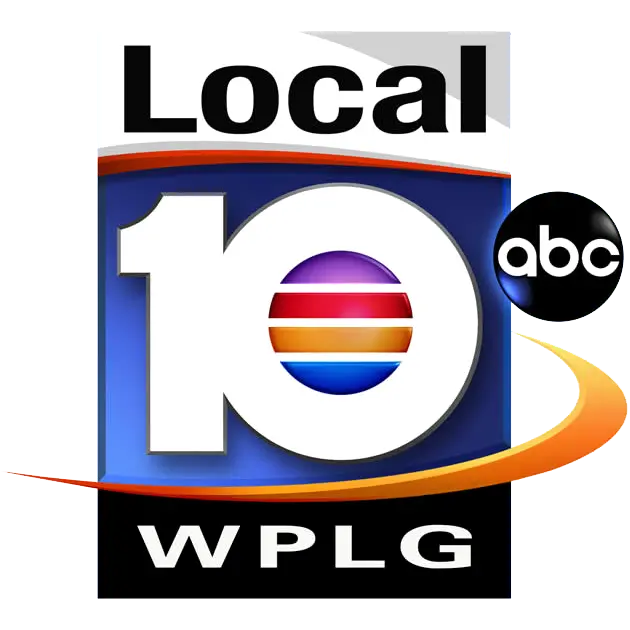















Fort Lauderdale is known for its stunning beaches, vibrant events, and bustling tourism. However, poor drainage, flooding risks, high foot traffic, and diverse infrastructure make slip-and-fall accidents common. The costs to cover injuries can set you back financially.
Slip-and-fall accidents happen often and are the second leading cause of injuries. The good news is that you may qualify for compensation if negligence causes your accident. In Fort Lauderdale, property owners are responsible for keeping their properties safe.
This means they must ensure there are no dangerous conditions. A property owner’s negligence can make you eligible for income loss, pain, suffering, and more.
However, proving liability and negligence is crucial to getting the justice you deserve. This is where our Fort Lauderdale slip-and-fall lawyers come in. They can gather evidence and negotiate a fair settlement. They can also take your case to trial if needed.
At Madalon Law, we have a team of experienced slip-and-fall attorneys in Fort Lauderdale at Madalon Law. Therefore, you can rest assured that we have the expertise, experience, and resources to build a winning case.
Fort Lauderdale can be hectic. It may not be as congested as Miami, but it is still very busy. The first areas that may come to mind when we think of crowded places where people can slip & fall may be popular hotspots like Fort Lauderdale Beach, Las Olas Riverfront and all of its great bars and restaurants. Even a person who may not like to go out to these areas can still run into examples of premises negligence in places like the Swap Shop, the Galleria, Whole Foods or even the local Publix Supermarket.
Fort Lauderdale is prone to several slip-and-fall accidents. Common ones include:
Wet and Slippery Surfaces
Rain during the wet season makes sidewalks and parking lots slippery. Water pools create hazards for pedestrians. Similarly, sand and water tracked from the beach into seaside establishments make floors slippery, which can lead to slips and falls.
Property owners should keep surfaces clean and well-maintained to prevent accidents. This includes cleaning spills and regularly inspecting areas prone to becoming slippery. Warning signs and non-slip mats can protect patrons and employees from wet conditions and tracked-in sand and water.
Poorly Maintained Walkways
Cracked and uneven sidewalks are tripping risks. Gaps or rough surfaces make them hazardous, especially for seniors or those with mobility issues. Falls on these sidewalks can cause bruises and serious injuries like fractures or head trauma.
Loose tiles and uneven carpets in commercial buildings or public spaces are also dangerous. Loose tiles create bumps or gaps that people might trip over, while uneven carpets can make visitors lose their balance. These hazards are particularly risky in busy areas such as Publix.
Accidents from these tripping hazards can cause pain, long-term health issues, and financial burdens from medical bills and lost wages. To prevent such incidents, property owners must regularly inspect and maintain sidewalks, tiles, and carpets. Prompt repairs should fix uneven surfaces or loose materials. Clear signage can also warn pedestrians about potential dangers, ensuring safer public spaces.
Inadequate Signage
Wet floors in restaurants, stores, and hotels, without warning signs, can cause slip-and-fall accidents. Inadequate signage is a serious safety issue. It fails to alert people to dangers.
Without clear warnings, visitors may ignore precautions, leading to preventable injuries. Property owners and managers are responsible for such negligence under premise liability laws. To improve safety, businesses should regularly inspect and maintain their premises. This includes fixing hazards and ensuring proper signage that warns of potential dangers. The proactive approach enhances safety and reduces accidents and liability.
Debris and Obstructions
Debris and obstacles on busy walkways can cause slip-and-fall accidents. Items like trash or fallen objects can trip people, leading to bruises or broken bones.
Construction sites also have tripping hazards. Uneven ground and blocked pathways from ongoing work can easily cause accidents.
These incidents can cause physical pain and financial strain from medical bills and lost wages. They can disrupt daily life and sometimes lead to long-term health issues.
To prevent accidents, property owners and construction managers must keep walkways clear. Regular cleaning and debris removal from public areas can reduce risks. At construction sites, marked hazardous zones and clear paths can protect both pedestrians and workers.
Poor Lighting
Poor lighting in parking lots, walkways, and alleys hides obstacles and changes in ground levels. This increases accident risks like trips and falls. Burned-out bulbs or malfunctioning lights make these areas even more hazardous by reducing visibility.
These issues can cause injuries ranging from minor cuts and bruises to serious fractures or head injuries. Regular maintenance and ensuring adequate lighting can prevent such accidents.
High Foot Traffic
Distractions and crowds in busy areas see many slip-and-fall accidents. Events like the Las Olas Wine & Food Festival see hazards such as spilled food, cables, and uneven surfaces. The high foot traffic contributes to these.
These conditions can cause minor slips or serious falls, causing injuries like sprains or fractures. To reduce risks, event organizers should regularly check for hazards, ensure good lighting, and use warning signs.
Staircase Issues
Broken or missing handrails on staircases make them unsafe. Uneven or damaged steps can trip people. Slippery steps without proper traction increase risk of falls, especially in wet conditions.
Regular maintenance and timely repairs are essential. Secure handrails and non-slip treads can prevent accidents and keep staircases safe.
The Fort Lauderdale slip, trip, and fall accident lawyers at MADALON LAW want you to know that the next time you fall and injure yourself, you might want to take a closer look at what caused the fall before assuming it was your own carelessness.
There are building codes in place to provide a safe walking area for anyone on a property. Even though all property owners are required to meet these safety requirements, it is surprising how many don’t. This is negligence on their part that can put you or a loved one in a situation that could cause an injury by tripping or falling.
The American Society of Testing Materials (ASTM) has a standard that has been carefully developed for your safety. It covers design and construction guidelines for buildings and their walking areas. Besides walkways and floorings, the ASTM standards also address carpeting, changes in level, headroom, lighting, mats, runners, hardware, exterior walkways, stairs, single steps, speed bumps, wheel stops, warnings, and gratings.
Here are some of the most common building violations and/or walking hazards most people see on a daily basis:
Handrails: At home, a staircase only needs one handrail, but commercial buildings actually require their full-height staircases to have 2 handrails. Commercial building codes also make it a requirement that handrails must be continuous and uninterrupted.
Stairways with dimensional inconsistency: Have you ever seen stairs where one step is shorter or higher than the others? Have you ever climbed to the top of a staircase (also called the “rise”) and before you enter the doorway there is still a separate step because the stairs ended before the doorway? These are all considered dimensional inconsistencies. This interruption in the flow of design can be the cause of someone tripping down the stairs.
Interior and exterior surfaces are not leveled: Have you ever walked into a business and had to step up to go into the doorway because the entrance was not leveled with the exterior of the business? This is a common building code violation and tripping hazard that many see.
Obstruction within the entranceway: The entranceway must be clear for people who enter. If there is an obstruction at the entrance of a business, then that is a code violation and hazard.
The uneven base of a ramp: the base (or bottom) of a ramp is supposed to meet the ground level smoothly. If it doesn’t, then it creates a “trip step” that someone can easily trip over.
Stairways with no landing: When you get to the top of the stairs, there needs to be a landing (the flat area you can stand on). If the stairs meet exactly at the door so that you are still standing on a step until you walk in the door, then that is a violation.
Building code violations are enforced because it has been proven time and again that a violation can cause an accident. The Fort Lauderdale slip, trip, and fall attorneys at MADALON LAW know what to look for in these types of cases to establish the other party’s negligence and seek the financial compensation you deserve. Contact our office so you can tell us what happened and we can answer your questions with a free consultation.
The Fort Lauderdale slip and fall attorneys at MADALON LAW want you to understand how falling down the stairs may be the fault of the building owners.
By understanding the parts of a stairway and required safety standards, it becomes easier to tell the difference between someone falling due to their own carelessness and an accident that happened due to the negligence of the building owner.
Stairways – the basic parts and requirements of a stairway
Parts you may not be familiar with
Parts we all know and the safety requirements you may not know
Types of Stairs
There are several different types of stairs. There are the more common straight-run stairs and scissor stairs that we see almost everywhere. Then there are also metal pan stairs, Alternating tread stairs, and winder stairs.
Even though all stairs must meet safety standards with guardrails, handrails, and structural integrity, there are other types of stairs that have additional requirements to be up to code:
If you have slipped, fallen, and are now injured from an accident, then you need to contact a law firm that is familiar with these cases and knows what to look for and be able to identify what happened. Contact the Fort Lauderdale slip and fall attorneys at MADALON LAW today for your free consultation.
Serious injuries from a fall can have lasting effects. Common slip and fall injuries in Fort Lauderdale include:
Sprains and Strains
Sprains and strains are common slip-and-fall injuries. If you twist or land awkwardly, you can sprain ankles, wrists, and muscles.
Sprains happen when ligaments, connect bones, stretch or tear. You get a strain when muscles or tendons, which attach muscles to bones, stretch or tear. Common ones include:
Twisted ankles, sprained wrists, and muscle strains are common injuries from slip and fall accidents. Twisted ankles cause severe pain and swelling, making walking difficult. You can also sprain your wrist, trying to break your fall with an outstretched hand, resulting in pain, swelling, and limited movement.
Muscle strains, caused by overstretching or twisting, affect various muscles and lead to pain and spasms. Depending on their severity, these injuries can take days or weeks to heal. Mild cases may recover quickly with proper care. Severe injuries may require medical treatment and physical therapy for a longer recovery period.
Fractures
You can fracture your wrists, arms, hips, and ankles in a slip-and-fall accident. These injuries are painful and take time to heal. Wrist fractures happen when someone tries to break their fall with their hand.
Arm and hip fractures are common, especially in older adults. Ankle fractures occur if the foot twists during a fall. Broken bones need medical treatment and often require casts or braces. Healing can take weeks or even months depending on injury severity.
Head Injuries
A hit to the head can cause concussions, contusions, or traumatic brain injuries. Concussions, the most common type, cause dizziness, headaches, and confusion. Contusions bruise the brain causing swelling and pressure.
Traumatic brain injuries are more severe and have long-lasting effects. These injuries often result in dizziness, mood swings, fainting, blurry vision, and light sensitivity impacting daily life. These symptoms affect cognitive and physical abilities, making routine tasks challenging.
Back and Spinal Cord Injuries
Falls can cause serious back and spinal cord injuries, such as strains and herniated discs. These occur when a fall strains muscles and ligaments or ruptures spinal discs.
In severe cases, a fall can cause paralysis, affecting mobility and quality of life. Recovery can be long and painful. It often requires medical care, physical therapy, and special rehabilitation equipment.
Strains occur when muscles or tendons in the back stretch or tear, causing pain and stiffness. Herniated discs occur when the cushioning discs between the vertebrae slip out of place. The displaced disc presses nerves, causing pain, numbness, or weakness. Patients require tailored treatment plans to reduce symptoms and restore function.
Cuts and Bruises
Falls can cause abrasions, cuts, and bruises. These happen when skin rubs against rough surfaces, causing cuts and redness. Cuts are deeper wounds from sharp objects and require stitches. Similarly, when blood vessels under the skin break on impact, they cause pain.
Serious cuts and bruises with significant tissue damage or scarring might require reconstructive surgery. Treatment includes cleaning and wound dressing to prevent infection.
Minor abrasions and bruises usually heal with time and basic care. However, severe cuts and bruising require medical attention for proper healing.
Serious cuts and bruises with significant tissue damage or scarring might require reconstructive surgery. Treatment includes cleaning and wound dressing to prevent infection.
Minor abrasions and bruises usually heal with time and basic care. However, severe cuts and bruising require medical attention for proper healing.
Soft Tissue Injuries
A fall can injure soft tissues such as tendons, ligaments, and muscles, leading to pain and restricted movement. These injuries require rest and physical therapy for recovery (in serious cases).
Tendons connect muscles to bones, and ligaments connect bones to each other, stabilizing joints. Strained and torn tissue causes discomfort and mobility issues. Rest can reduce swelling and quicken healing.
Physical therapy can help you regain strength and flexibility, especially if your injury affects daily activities or sports.
For complete tears or severe strains, medical treatment may involve a brace or splint to aid healing. Guided exercises can restore normal function. Proper care and rehabilitation prevent long-term issues and ensure full recovery from soft tissue injuries.
Emotional and Psychological Impact
Slip and fall accidents can cause emotional distress in the form of anxiety or post-traumatic stress disorder (PTSD). Feelings of fear and unease can persist, affecting daily life and activities.
Psychological intervention is necessary for serious cases. Therapists can help patients process and cope with the accident’s emotional aftermath. Techniques such as cognitive-behavioral therapy (CBT) address anxiety and trauma-related symptoms.
Fort Lauderdale businesses are responsible for safety. They must maintain a safe environment for visitors and customers.
Duty of Care: Keeping Customers Safe
According to Florida law, business owners have a duty of care to visitors or ‘invitees’. This means preventing injuries on their property. It goes beyond a simple one-time inspection. They must address potential hazards daily to ensure a hazard-free environment.
This includes:
Initial safety evaluations aren’t enough. New hazards form throughout the day as customers enter and exit the premises. Property owners have a duty of care to ensure visitor safety 24/7 in Fort Lauderdale.
Slip and fall injuries can be scary and confusing. With your help, your slip-and-fall experienced attorney in Fort Lauderdale can strengthen your case. Follow these steps after your accident:
Get Immediate Medical Attention
After slipping, get emergency care. You may have hidden internal injuries that can be fatal or cause lasting damage.
A doctor must document these for a strong case. Delays can negatively impact the case. Be as thorough as possible during the medical examination for maximum compensation.
Take Notes
Alert the store manager or property owner of the accident immediately after the accident. Note down the:
Also, note what you were doing when the accident happened. This is important in case the liable party tries to blame you.
Take Pictures
Your notes may be weak evidence. Pictures, on the other hand, are solid proof. Make sure to take photos from various angles to capture the overall condition and lighting of the accident site. If you’re seriously injured, ask someone else to take the pictures for you.
Save Evidence
The clothing or shoes worn during the accident is solid evidence.. For example, torn clothing or scuffed shoes indicate impact force or surface conditions of the accident site. Keeping these items as they are can provide important details about the accident. This could be crucial if you decide to seek compensation or hold someone liable.
Don’t Discuss Fault
Don’t accept the blame for the accident or discuss fault. It weakens potential slip-and-fall claims later. A Fort Lauderdale slip-and-fall attorney can guide you further.
Follow Medical Advice
Follow the prescribed treatment plan and attend medical appointments necessary for your recovery. It creates a documented record of your injuries and treatments. These are evidence for your compensation claim. Additionally, they also link your injuries to the accident.
Monitor Time Limits
Be aware of deadlines for filing insurance claims or legal actions related to the accident. Protect your rights with quick action with help from a Fort Lauderdale slip and fall lawyer.
A fall can set you back physically and financially. You deserve maximum compensation for your injuries and discomfort. Here are some damages a personal injury attorney can fight for:
Medical Care and Related Expenses
Slip and fall injuries can be minor or major, depending on the accident. Common medical care you may need to treat them include:
Ongoing and Future Care Costs
Serious slip and fall injuries may require ongoing medical care. These include:
Lost Wages and Benefits
Compensation can cover lost wages if you must take time off work to recover from your injuries. These include:
Property Damage
Property damage from a slip and fault accident can include:
Other Out-of-Pocket Expenses
Remember, no one goes through their day thinking they will slip and injure themselves. If you injure yourself, the negligent party must cover damages. These include out-of-pocket expenses, such as:
Child Care: Children require 24/7 supervision and care. As a parent injured in a slip and fall accident, who will take care of them? In this case, compensation may include childcare services.
Pain and Suffering
Long-lasting pain and stress from injuries cause emotional and physical distress. While difficult to quantify, pain and suffering are damages you can recover. Examples include:
A slip-and-fall attorney can strengthen your personal injury claim. Here are some ways how:
Expertise in Personal Injury Law
Slip and fall accidents can be stressful, leaving you with injuries, medical bills, and lost wages. That’s where a slip and fall attorney comes in. These lawyers are personal injury experts.
They know the ins and outs of accident liability, insurance claims, and the law. This expertise allows them to handle your case smoothly and effectively.
Here’s how a slip and fall attorney can help:
A lawyer can greatly improve your chances of winning your slip and fall case. They use their legal expertise and knowledge of these cases to help you succeed. They’ll handle everything, so you can focus on getting better while they work to get you the compensation you deserve.
Determining Liability
A slip and fall accident lawyer in Fort Lauderdale, Florida can determine who is legally responsible for your injuries. Investigation and evidence can prove if negligence caused your fall. This involves a property check, witness accounts, and handling legal issues.
A lawyer will look at two main things when assessing liability. Did the property owner or manager fail to keep the area safe? Secondly, did safety regulations cause the accident?
Your lawyer can build a strong case for compensation using these details. This may cover medical expenses, lost wages, pain and suffering, and other damages from the accident.
Maximizing Compensation
A slip and fall accident can lead to unexpected medical bills, lost income from missed work, and physical pain. A lawyer can ensure you get the compensation you deserve. They’ll work to recover all your medical expenses. Lost wages during your recovery won’t be forgotten either.
This also includes the income you missed while recovering. Pain and suffering caused by the accident are also compensable. The lawyer will present evidence of your injuries and their impact on your life. In case of extreme negligence, punitive damages might be awarded to punish the property owner.
Handling Insurance Companies
Insurance companies can be tough. They might downplay your injury or deny fault altogether. But a slip-and-fall attorney can fight for you. They’ll speak directly with the insurance adjusters, explaining accident details and why you deserve compensation.
They won’t settle for a quick, lowball offer. Instead, they’ll negotiate to get you a fair settlement that covers everything. This includes your current medical bills, possible future treatments, and lost wages. They’ll even factor in the pain and suffering you’ve endured.
Legal Strategy and Representation
A slip and fall case can be complex. Here are some ways a Fort Lauderdale slip and fall attorney can help:
This includes medical bills, future treatment, and lost wages. You may get a lowball offer at first. However, your lawyer will fight for a fair deal.
Emotional Support
Emotions can run high after a slip-and-fall accident. A lawyer provides objective guidance and support during this stressful time. Decisions are guided by legal strategy, not emotion. Here’s how they help:
Access to Resources
Madalon Law Fort Lauderdale slip and fall lawyers have strong resources for your case. These expert opinions and evidence can support your claim for maximum compensation. Some of them include:
Contingency Fee Arrangement
Most slip and fall lawyers work on a contingency fee basis. This means you only pay if they secure compensation for you. This arrangement makes legal representation accessible without upfront costs.
Meeting Statute of Limitations
Every personal injury case has a time limit. A lawyer ensures your case meets these deadlines to preserve compensation rights. The court could dismiss your case if you miss it.
As time passes, evidence and memories fade, compromising claims. Delays benefit insurance companies in negotiations and can reduce compensation.
Consult a lawyer promptly after a slip-and-fall accident to ensure you can take legal action within the time limit. Protect your rights to compensation for medical costs, lost income, pain and suffering, and other damages.
Get Peace of Mind
A slip-and-fall lawsuit can be overwhelming. Defendants, their attorneys, and insurance agents will do and say anything to reduce your claim. A personal injury lawyer from a good law firm can handle the legal complexities as you recover from injuries.
Frequently Asked Questions
What is comparative negligence in a Fort Lauderdale slip and fall case?
Comparative negligence means the court decides how much each person is to blame for the accident. If you’re partly at fault, your compensation can be reduced based on your fault percentage.
Florida uses a pure comparative negligence rule. This means even if you’re mostly to blame, you can still receive some compensation from the other party. This ensures fairness in determining compensation in slip and fall cases.
Who is to blame in a slip-and-fall accident?
It’s usually the property owner or manager, whether it’s a home, business, or public place. Others could include maintenance or cleaning companies, or businesses renting the space. Your Fort Lauderdale personal injury lawyer can determine accountable parties through evidence, maintenance records, witness statements, etc.
I don’t feel pain after my slip and fall accident. Do I have a case?
You may have a case even if you don’t feel pain after the accident. Adrenaline temporarily numbs pain. This means you might not notice injuries immediately. Serious conditions can develop later, even if you feel okay at first.
Doctors can find hidden injuries and provide early treatment to prevent complications. Sometimes, symptoms like stiffness, headaches, or dizziness appear days or weeks after an accident. These could point to underlying injuries that need attention.
A medical consultation creates a record of your injuries. This is crucial if you decide to pursue a legal case later. Insurance companies and legal proceedings often require medical documentation for claim support.
How do I prove my slip-and-fall injury case?
First, show that the property owner or manager didn’t keep the property safe for visitors like you. Also, prove that they knew about the danger or should have known. This could be because the hazard was common or had been there long enough for them to notice.
Remember, every case differs. Your Fort Lauderdale slip-and-fall lawyer at Madalon Law can guide you better.
Will my slip-and-fall injury case go to trial?
Most slip-and-fall cases settle before they go to trial. Less than 5% of these cases end up in court. Trials are lengthy and costly for both parties, so they often prefer to settle out of court.
The first choice is to negotiate a settlement outside court. However, if both sides can’t reach an agreement, a trial is possible.
Can I sue my employer for my slip-and-fall workplace accident?
In Florida, workers’ compensation immunity prevents employees from suing employers for these accidents. In other words, you cannot sue your employer for negligence. Instead, you can only receive workers’ compensation benefits. These benefits cover some medical bills and lost wages.
Should I talk to the defendant’s insurance adjuster?
You don’t have to talk to their insurance adjuster. Your slip-and-fall attorney will talk to them to decide the best way forward.
However, nothing you say will be recorded or used against you later. Please note, that you’re under no obligation to speak to the insurance adjuster at all.
Does the slip-and-fall accident location impact settlement?
The accident location can impact your case. For example, if you slip on a puddle in an office building, proving the staff should have known about it is difficult. In a grocery store, spills are common, and easier to prove.
In almost all cases, the business owner must exercise reasonable care. They are negligent if they fail to do so.
Should I file an accident report after a slip-and-fall accident?
You don’t have to file an accident report. However, reporting the hazardous condition and asking for a report is a good idea. Stores might ask you to fill or sign a report explaining what happened. Document the incident while it’s still fresh in your mind on paper.
Wait before filling out the report if you’re too injured or uncertain. Stores like Walmart, Target, and Publix have their own accident report policies. They regularly get slip and fall cases, so they will contact you or your lawyer shortly after your accident.
What do I do if someone is injured in my home?
If someone is hurt on your property, call your insurance company right away. Homeowners’ insurance typically covers accidents like these.
Fix known hazards such as broken steps or holes, or warn others to prevent accidents and reduce liability. Being proactive helps protect you legally and financially. It also shows responsible property management, making your property safer for everyone.
How much is my slip and fall case worth?
Your case’s worth can change based on your losses. As your medical bills and lost wages change, so does your claim value.
Some cases are more valuable than others. These include those with severe injuries that need extensive medical treatment. We prioritize your well-being and aim to recover everything owed to you.
A free case consultation can help. Our Fort Lauderdale slip and fall attorneys at Madalon Law can explain the details and answer questions about your case’s value.
How do I know I have a personal injury case?
You don’t have to decide this alone. Contact a lawyer for a free consultation to discuss your situation. They’ll explain who you can sue and what compensation you might expect based on your accident and state laws.
You likely have a case if the property owner’s negligence caused your injuries. But legal standards can be complex, so getting advice from a lawyer is crucial.
What do I do if an insurance adjuster calls me after my slip and fall accident?
If they call you, be cautious. Insurance adjusters have one job – to collect information that could reduce their client’s responsibility or your compensation.
Here’s what to do:
What other evidence besides pictures do I need for a strong slip and fall claim?
Besides pictures, the following evidence can strengthen your claim:
Maximize Your Compensation with Madalon Law Slip-and-Fall Lawyers
An experienced Madalon Law personal injury attorney can determine potential damages and the full claim value. Here’s how we can help:
You must file a personal injury claim four years from the accident date. Delays can weaken your claim – evidence spoils, and negligent parties can move. You deserve maximum compensation. Book a consultation with our Fort Lauderdale slip and fall lawyers at Madalon Law today!
Our firm understands the challenges following a premises liability accident. We focus on what matters most: securing the compensation you deserve.
Contact Us For A FREE Initial Consultation and to File a Lawsuit!
Reffaie v. Wal-Mart Stores, Inc., 96 So. 3d 1073, 1074 (Fla. Dist. Ct. App. 2012)
This tort action was brought on by the plaintiff in the lawsuit after they sustained injuries from a slip-and-fall incident at a store.
On the day of the slip and fall accident, the plaintiff was entering a Wal-Mart Supercenter when they encountered a substance described as slippery on the floor. Without warning, the plaintiff was caused to fall to the ground when her feet slipped out from under her when she came into contact with the substance. Ultimately, the plaintiff required surgery to fix injuries sustained to her shoulder and neck.
This case is unique in that the jury found in favor of the plaintiff, however, they reduced the amount of damages by the percentage of fault found to be attributed to the plaintiff. Though Wal-Mart was in fact found negligent for allowing the liquid to remain on the floor walked on by customers, the plaintiff was determined to have contributed to the fall itself. The jury assigned the plaintiff with eighty percent of the liability in causing her injuries. After calculating the total amount of damages to be just under one hundred thousand dollars, the jury reduced that amount by eighty percent, and awarded the plaintiff with nineteen thousand dollars.
Until recently, Florida did not institute a strong burden of proof on the part of a plaintiff to establish conditions of a slip-and-fall accident at a place of business. However, changes in the law have made this burden of proof more stringent on the part of a plaintiff. Previously, the burden of proof that a plaintiff was faced with in a slip and fall case only required them to demonstrate that a slip and fall had actually taken place. The defendant was left to show that they took appropriate steps to make sure that the property was safe for their patrons.
The changes to the law make it necessary for a plaintiff in a slip and fall lawsuit to show that the business owed them a duty of care, and that duty was breached as a result of a negligent act. The way that a plaintiff can demonstrate this is by showing that the business knew, or should have known of the hazardous condition and that the business needed to take steps towards fixing the problem.
There are two types of “notice” when it comes to a business being aware of a hazardous condition. The first type of notice, ‘actual notice’, is seemingly cut and dry; the business knew that the condition existed. A more difficult type of notice is in proving the second type, “constructive notice”. In essence, this type of notice simply means that given the circumstances, the business should have known of the condition, regardless of them actually knowing about it.
Though this new law requires a bit more investigation into slip and fall accidents, it does not eliminate recovery from them altogether. The goal that the Florida legislature had in mind was to reduce the amount of fraudulent cases being filed against businesses. At one point, Florida slip-and-fall lawsuits were nearly two times greater than the average across the country.
If you have been injured from a fall and believe it may have been caused by the negligence of the store, contact our firm and tell us the details. We will go over your case with you at no cost during your free consultation. We are based in Fort Lauderdale but fight for the rights of the injured throughout Florida.
Slip and fall accidents can cause serious injury. These injuries often occur on elevated areas, but can also happen with a shortfall on a flat surface – depending on how the person hits the floor. If you are injured due to a fall and feel it may have been caused by the negligence of another party, you should contact an attorney immediately and let them know what happened. The Fort Lauderdale slip and fall attorneys of Madalon Law have an incredible success record with these types of cases and have won when going up against large corporations. Let us know what happened and we will tell you if you have a case.
Slip and fall accidents can be stressful, leaving you with injuries, medical bills, and lost wages. Contact the Fort Lauderdale slip and fall lawyers at Madalon Law today. Call 888-888-5666 to set up your free consultation.